Meredith Allard's Blog, page 34
March 27, 2014
An Interview With Barbara Taylor Bradford
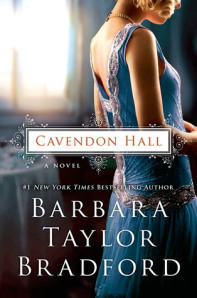 As the executive editor of The Copperfield Review, a journal of historical fiction, I’ve been able to interview such literary legends as John Jakes and Jean M. Auel. Recently, I had the opportunity to interview another legend, Barbara Taylor Bradford.
As the executive editor of The Copperfield Review, a journal of historical fiction, I’ve been able to interview such literary legends as John Jakes and Jean M. Auel. Recently, I had the opportunity to interview another legend, Barbara Taylor Bradford.
Barbara Taylor Bradford has written the notable New York Times Best Sellers A Woman of Substance, The Ravenscar Dynasty, and The Women in His Life, among many others. Her newest novel is Cavendon Hall, set to be released April 1, 2014. Cavendon Hall will be available from Amazon and other book retailers.
Meredith Allard: I admit, when I read the synopsis of your newest novel, Cavendon Hall, I jumped at the chance to read it because it reminded me of Downton Abbey, which is one of my all time favorite shows. Was Downton an inspiration for Cavendon Hall? Were there other inspirations for Cavendon Hall as well?
Barbara Taylor Bradford: No, Downton Abbey was not my inspiration for Cavendon Hall. In fact, the outline for this book and the sequel I’m now writing (The Cavendon Women), was created six years ago. I did not present it to my publisher at that time because they were looking for books set in the present from me. I wrote Cavendon Hall in 2013.
FYI, I have been writing family sagas since A Woman of Substance, including six sequels to AWOS, making it a seven book series, set at Pennistone Royal (the stately home in Yorkshire), and at Harte’s Emma’s department store in London. A Woman of Substance was a six-hour mini-series for television, and was followed by two more series, Hold the Dream, and To Be the Best, made from my books. Stars in these shows were Sir Anthony Hopkins, Sir John Mills, Liam Neeson, James Brolin, Nigel Havers, Deborah Kerr, Jenny Seagrove, Lindsey Wagner, Victoria Tennant, Fiona Fullerton, and many renowned actors.
Altogether, ten of my books have been made for television, nine by my husband, Robert Bradford, who is a movie and television producer, as well as the manager of my career.
I wrote another family saga, The Ravenscar Dynasty, about the Deravenel family, also set in Yorkshire, London and other parts of the world. The UK newspapers say I re-invented the family saga for this generation, and created the first department store dramas with the Emma Harte series, long before all those recent television shows. They call me the “undisputed queen of the family saga” in the UK newspapers and magazines.
The idea for Cavendon Hall and The Cavendon Women came to me when I was thinking about the long friendships I personally have had with my women friends, some over thirty years. I was suddenly taken with the idea of writing about two girls who grow up together and remain lifelong friends. . .Cecily Swann and Delacy Ingham, and I took it from there. It begins in 1913.
M.A.: Tell us about Cavendon Hall. How would you describe it to potential readers? How is it similar/different from what readers have come to love about your novels?
B.T.B.: Cavendon Hall is a family saga about two families, the aristocratic Inghams, and the Swanns, their retainers, who have stood by the family for 160 years. It is not actually an upstairs-downstairs novel, but an upstairs-in-the-middle novel, with the downstairs servants taking a smaller role in the story. As the First World War looms, a devastating event threatens the Inghams, one of which could bring the family down. Certainly it changes the future for them all. It is a blend of history and drama, romance, betrayal and loss. It ends in 1920. The sequel, The Cavendon Women, starts in 1926, and picks up the previous story of the Inghams and the Swanns.
M.A.: Do you enjoy writing historical fiction? What are the particular joys/challenges of writing historical fiction?
B.T.B.: I love writing fiction. It is a great challenge, but also it’s like starting out on an adventure, especially historical fiction. Going back into the past is intriguing and full of possibilities.
M.A.: For me, researching historical fiction is always the most challenging part of writing historical fiction. What is your research process? Do you travel for research? How do you incorporate the facts of the era with your fictional story?
B.T.B.: I do most of my own research because I know exactly what I’m looking for. In this instance, I already knew a lot about the Edwardian era, partially because I researched it for The Ravenscar Dynasty series, and also because being English I am well-versed in the history of England. In fact, it was always my favorite subject at school. When I am researching I prefer to use books by well-known historians, which I trust the most. I sometimes go back to places in England, which I need to refresh myself about. For instance, I went back to Ravenscar in Yorkshire, before I started that entire series. I wanted to get a sense of that place. I hadn’t visited it since I was a teenager. I weave in the true facts of history, and very carefully, because I don’t want the research to jump out at the reader. It is always subtle but correct, and therefore, adds authenticity to the drama unfolding. Research shouldn’t be obvious.
M.A.: You’ve written some of the most beloved novels of all time. I certainly count A Woman of Substance as among my favorite novels. When did you begin writing, and what were your earliest inspirations? Why did you decide to start writing novels?
B.T.B.: I started writing when I was seven years old. My mother had taught me to read at four, and I was addicted to reading. Then I started to tell my own stories in school exercise books. When I was ten my mother sent a story of mine to a children’s magazine. They not only accepted it but paid me ten-shillings-and-sixpence for it. The day I saw my byline my destiny was sealed. I was going to be a writer. Actually I became a journalist. I started on the Yorkshire Evening Post as a reporter, became women’s page editor, and then went on to work in London on various newspapers and magazines. I consider myself to be journalist today and still write for British newspapers and magazines on a regular basis. However, I had always wanted to be a novelist, and I started but did not finish four novels before I had the idea for A Woman of Substance.
M.A.: Your first novel, A Woman of Substance, became a best seller, which is incredible. What was your journey to publication like?
B.T.B.: Having discarded four ideas for novels, at around 100 pages, I asked myself a lot of questions one day: What sort of book did I want to write, where did I want to set and what year would the story start. I came up with these answers: A traditional family saga, set at the turn of the 20th century, and in England, or rather, Yorkshire. I wanted to tell a story about an ordinary woman who becomes a tycoon, a great success…a woman of substance. This thought became the title. I wrote an outline, showed it to a friend in England who was an agent. He told an editor at Doubleday about my outline and gave her my phone number. After reading it overnight, she told me it was the best outline she had ever read, and that it if I wrote it I would have a big bestseller. She was correct. To date the book has sold 35 million copies worldwide, and is now a huge success as an e-book for the first time, published by Rosetta Books.
M.A.: How have you seen the publishing industry change since A Woman of Substance was published?
B.T.B.: Publishing has changed throughout the world. The changes have come about because of the internet and digital publishing. But I always welcome change and my books sell very well as e-books. I have noticed there are “trends” that last for a while, such as the Dracula books, and other. But trends do seem to come and go. One trend that has lasted is the crime novel. It goes on forever.
M.A.: Which authors are your inspiration—in your writing life and/or your personal life?
B.T.B.: I was always influenced by the classics, which I grew up with. My favorite writers have always been Emily Brontë, Charlotte Brontë, Charles Dickens, in particular; Thomas Hardy, and Colette, the French writer. I also have drawn inspiration from their work, and learned a lot about life and writing about life’s experiences.
M.A.: What advice do you have for those who want to write and publish fiction?
B.T.B.: My advice to those who want to write is to actually sit down and do it. However, I think they come to that chair well prepared. I always think out a story to the very end, and I believe that is the only way to go. Once I have thought out the characters and the plot, I write an outline for myself. It’s my blueprint. Once I’m satisfied I have covered everything, I start telling the story. I always do it very systematically, from page one until the end. I don’t jump around, writing bits and pieces and then fitting them. I divide my books into different parts: Part One, Part Two, and so on. I have always done this, and I find it helped me to organize the characters and their lives.
M.A.: Is there anything else you would like readers to know?
B.T.B.: I plan to keep on writing for the rest of my life.
Filed under: Guest Authors, Historical Fiction Tagged: Barbara Taylor Bradford, Cavendon Hall, interviews

March 20, 2014
Writing a First Draft Part 4
 Tip 4: Give yourself a small task to complete every day.
Tip 4: Give yourself a small task to complete every day.
In How to Write and Sell Your First Novel, Oscar Collier suggests the quota of three pages a day. I like that quota and have used it myself for years. Three pages usually works out to about 1500 words, which is enough that I’m making progess every day but not so much that I feel overwhelmed because it will be too hard or take hours to finish.
At a certain point every day I realize I’ve exhausted my list of Excuses (I’ve made dinner and dusted and played Words With Friends and pinned on Pinterest and emptied the dishwasher and fed the cats and checked my e-mail and…). At that time I have to accept that there’s no earthly reason I can’t write, so I say to myself, “It’s only three pages.” I sit at my computer, open my file, count three pages from where I left off to see what page number I’ll end up on, and go. I don’t worry about anything at this point, not spelling, not word choice, not organization, not even if it makes sense. I will fix those things later. I write my three pages and call it a day.
On days when things are flowing well, I might write more than three pages. Most days I end up writing four or five pages. Some days I write 10 pages. On really good days I’ve written 20 pages or more, but days like that are rare in the first draft stage. When I’m feeling like I’d rather pop my own eyes out with spoons than keep writing, I remind myself, again, that it’s only three pages. Tonight, for example, I hit my three page quota, felt the mental strain from getting that far, and stopped. Still, I felt good about it. I met my quota. I moved my story forward, and that’s all I need to do right now.
In Bird by Bird Anne Lamott talks about short assignments and writing just as much as you can see through a one-inch picture frame. When I heard Wanna Get Lucky? author Deborah Coonts speak at the Las Vegas Writers Group in June 2010, she said she gives herself a quota of 1500 words a day. Remember that quotas are a great tool that many writers use, but they only work if they’re reasonable. Don’t give yourself a high quota, like 15 pages, 5000 words, or a 10-inch picture frame because it’s a lot to write every day and it will be discouraging when you don’t get there. Writing is hard enough without self-sabotage. Give yourself a small goal you can actually reach and get it done every day.
Filed under: Writing Tagged: writing, writing a first draft, writing tips

March 13, 2014
Writing a First Draft Part 3
Tip 3: Accept that your first draft will need a crazy amount of rewriting.
If you accept up front that your first draft is going to stink, it frees you up to write, as Natalie Goldberg calls it in Writing Down the Bones, “the worst junk in the world.” If you’ve read Bird by Bird you know that Anne Lamott calls them “shitty first drafts.” I love Anne Lamott for many reasons, but I really love her for making the phrase “shitty first drafts” part of my vernacular. If you recognize before you even start writing that your first draft is going to stink, then you won’t waste needless time staring at a blank computer screen wondering what to write or worried that it won’t be good enough. It won’t be good enough. You’ll need to do a crazy amount of rewriting. The sooner you embrace the concept of “shitty first drafts” the sooner you’ll get that dreaded first draft over with.
Over time, I’ve also come to accept the fact that I’ll end up trashing most of what I write in my first draft. Today I’m on page 156 of my current first draft. Sounds good, right? Wrong. Most of what I have will be deleted eventually, sent to that cyberspace void of misused words and half-baked ideas. Why? Because a lot of what I have written is redundant, with the same idea repeated, and repeated, and… It takes a few flying leaps for me to say exactly what I mean. I’m still feeling out the common thread, the theme, that will tie the story together. I still have to research the historical aspect because in this new work I’m back to historical fiction. I always get great ideas from the research, and those ideas will add depth and color to the flat black and white canvas I’m currently painting on. The chapters aren’t in order because quite frankly I haven’t decided on the order. I haven’t settled on a point of view. I could go on, but I won’t.
Did I mention I have a tendency to repeat myself?
The only writer I’ve ever known who said her first drafts came out perfectly was a creative writing instructor I had in grad school. She said, to a cynical and disbelieving class, that everything came out exactly right the first time she wrote it down. She said she went over her sentences in her head until she had them just right and then, and only then, would she commit her words to paper. Mozart did the same, she said. Some smart-ass in the back of the class (I swear it wasn’t me) pointed out that in fact she did write several drafts, only she did it in her head instead of on paper like the rest of us. She simply smiled at him. What that smile meant, I still don’t know. All I can say is that around 90 percent of us will need to write our first drafts out, as in words on paper, and rewrite many times before we can say we have a perfect, polished final draft.
Filed under: Writing Tagged: creative writing, writing, writing a first draft

March 7, 2014
Writing a First Draft Part 2
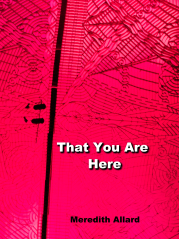 A quick note: That You Are Here is currently a Kindle Countdown Deal. Here’s the schedule and pricing:
A quick note: That You Are Here is currently a Kindle Countdown Deal. Here’s the schedule and pricing:
March 7 and 8: 99 cents
March 9 and 10: $1.99
March 11: $2.99
March 12: Back to the regular price of $3.99
Writing a First Draft Tip 2: Organize your thoughts each day.
It’s hard to begin writing anything with only a vague idea of what we want to write. Those empty moments when we’re not sure what we want to say are when self-doubts begin to rise, Excuses invade our minds, and we decide we don’t really need to write today after all. If we begin each day knowing where we want to start, we can begin with focus, avoiding the “monkey mind” Natalie Goldberg talks about in Writing Down the Bones.
One trick I use is to write an outline before I start writing the first draft. For a novel, my outline is a blueprint of what I think will happen in each chapter. Notice I said what I think will happen. As most writers will tell you, once you’ve started writing often the story or the characters will take you in a different direction than you intended. Those first ideas are simply a tool to get you thinking through your story, a way to get you writing something. If the ideas aren’t coming for me one day, then I’ll do a free write. A free write is simply that–a brainstorming activity where I’ll write whatever comes to mind about a character, the setting, the theme, or the plot. Sometimes if I’m really stuck I’ll start freewriting about something that has nothing to do with my story just to get the words flowing. Don’t skimp on the prewriting. As a long time writing teacher, I know that a lot of students want to skip over the prewriting process. But I think you’ll find prewriting time well spent. There are writers who do all right without any prewriting, and that’s great. For me, the more I write, and the longer I teach writing, the more I find that the idea-gathering process makes for an easier first draft.
Where do I begin each day? Wherever I want. Most days I begin with my chapter blueprint and type out my ideas for the next scene the best I can. I say the best I can because my first drafts are little more than quick descriptions, bland character interactions, and a ton of banal dialogue.
“Hi! How are you?”
“I’m great! And you?”
“Oh, you know. I’ve got that leaky wart on my big toe…”
I’m not kidding, by the way. My first draft dialogue really is that bad.
For me, the first draft is only a fleshed out outline. As I’m writing a first draft I keep pushing forward, one word after another, until I’m finished with the story. I give myself few rules while writing first drafts. Writing a first draft is hard enough without following arbitrary rules I’ve set up for the sole purpose of making myself more miserable. As long as I’m producing words that push the story forward every day, it’s all good.
You don’t have to outline as your prewriting activity. That’s simply my preference. I know other writers who outline, and they do it to keep their thoughts organized, as I do. Others find outlining too stifling, like they’re trapped within the imaginary boundaries they’ve created. They prefer to take a creative leap each day and see where the story carries them. That’s why I love writing fiction. You don’t have to do anything. There’s no right way. Everything about the first draft is about toying with words, playing with ideas, exploring possibilities. Explore away.
Filed under: That You Are Here, Writing Tagged: writing, writing a first draft

March 3, 2014
Writing a First Draft Part 1
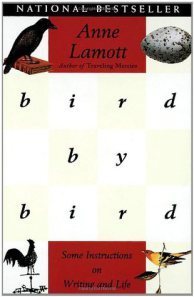 Every writer I’ve ever known, and every writer I’ve ever read about, says the same thing: the art of writing is in the rewriting. Writing the first draft is a chore, but we can’t proceed to our final draft without it.
Every writer I’ve ever known, and every writer I’ve ever read about, says the same thing: the art of writing is in the rewriting. Writing the first draft is a chore, but we can’t proceed to our final draft without it.
Three books that have helped me through all stages of writing are Writing Down the Bones by Natalie Goldberg, Bird by Bird by Anne Lamott, and How to Write and Sell Your First Novel by Oscar Collier. I’ve read those books so many times that the information contained within has intertwined into my DNA (like hair coiling in Avatar). Many of the tips I have shared with writers over the years come from these books. If you’re a writer, I recommend you read them.
Tip 1: Make sure you love what you’re writing. If you don’t, you probably won’t write it.
I often encounter people who’ve had this great idea for a book for years but they haven’t gotten around to writing it. I tell them that if the idea isn’t pressing them to the point of distraction, then it might not be right for them. I tell them that if they have a nice life, a nice job, a nice family, and don’t feel a burning desire to write that story then they probably won’t. Thinking you want to be a writer and writing are two different things. Writing is hard enough when you feel compelled by Fate to do it. It’s even harder, if not impossible, when you don’t have that burning desire. When is it time to write? When it’s more painful not to write something than it is to write it. If an idea is gnawing at you and won’t leave you alone to your nice life with your nice family, that’s when the writing process begins.
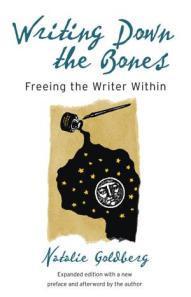 For all the projects I’ve completed, many more lay by the wayside. If I wasn’t compelled by what I was writing, then I dropped it. If I can’t convince myself that the project is worth writing, how can I convince a reader that it’s worth reading? When I began working on Her Dear & Loving Husband way back in the old-timey days of 2009, I was so compelled by James and Sarah’s story that I worked on it nearly every day for one year—367 days to be exact. I may have taken a Sunday off here and there, but even on those days when I wasn’t at the computer it was always on my mind. In that case, I wrote the first draft in six weeks. It was, come to think of it, the easiest first draft I’ve ever written. Why? Because I had to write that story down. I had to get it out of my head and onto paper. I couldn’t live peacefully with myself if I didn’t.
For all the projects I’ve completed, many more lay by the wayside. If I wasn’t compelled by what I was writing, then I dropped it. If I can’t convince myself that the project is worth writing, how can I convince a reader that it’s worth reading? When I began working on Her Dear & Loving Husband way back in the old-timey days of 2009, I was so compelled by James and Sarah’s story that I worked on it nearly every day for one year—367 days to be exact. I may have taken a Sunday off here and there, but even on those days when I wasn’t at the computer it was always on my mind. In that case, I wrote the first draft in six weeks. It was, come to think of it, the easiest first draft I’ve ever written. Why? Because I had to write that story down. I had to get it out of my head and onto paper. I couldn’t live peacefully with myself if I didn’t.
Do you love what you’re writing? If the answer is yes, then you’re on the right track. If the answer is no, that’s okay. Not every idea is meant to be a long-term project. Keep searching until you find that idea that keeps you up at night, itching to get back to it.
Filed under: Writing Tagged: writing, writing a first draft, writing tips

February 21, 2014
An Interview With Ruth Hull Chatlien
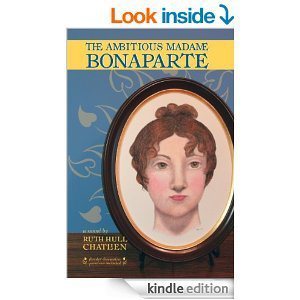 Ruth Hull Chatlien is the author of the historical novel The Ambitious Madame Bonaparte. Here’s her take on writing historical fiction.
Ruth Hull Chatlien is the author of the historical novel The Ambitious Madame Bonaparte. Here’s her take on writing historical fiction.
When and why did you begin writing, and did you always write historical fiction?
I started my first novel when I was ten years old—so long ago that I don’t remember why I did it beyond a love of stories. That first novel was historical fiction about forbidden romance and patriotic spies during the American Revolution. I finally finished the 120-page manuscript when I was in high school. In college, I majored in literature, and influenced by that experience, I spent the next 30 years writing literary fiction. I managed to get a few poems and short stories published. Finally, a few years ago, I decided to go back to my first love: historical fiction.
What inspired you to write The Ambitious Madame Bonaparte?
My husband and I were great fans of the Horatio Hornblower television series in the late 1990s. Then in the 2000s, we discovered an additional four episodes that we had never seen because they were produced much later. The last of those featured Jerome and Betsy Bonaparte. Despite my familiarity with world history, I didn’t know that Napoleon’s brother had married an American. When I looked up the facts on the Internet, I discovered that Betsy’s real life was far more interesting than the snippet shown (and distorted) in the television show.
Tell us about The Ambitious Madame Bonaparte. How would you describe it to potential readers?
The book combines romance, action adventure, and a tale of family dysfunction. Betsy Bonaparte was a heroine as beautiful and headstrong as Scarlett O’Hara, but unlike Scarlett, she was a real woman. She led a tumultuous life because of her belief that a woman had as much right to exercise her talents as any man.
All authors have a different path as they seek publication. What was your journey to publication like?
Originally, I sought traditional publication for the novel. I spent about six months shopping it around to agents without success. The original version of the book had two problems; it was longer than what publishers wanted to see from a first-time author, and because I had tried to keep it short, it wasn’t descriptive enough. Then in February 2013, through a mutual friend I met the man who had founded Amika Press in Chicago. He was excited about the concept of my book, so after taking some time to consider whether I was ready to give up on New York publication, I submitted the manuscript. The publisher and editor at Amika both read it, liked it, and agreed to take it on. My editor was fantastic and really helped me make it the book I dreamed it would be. To my surprise, he wanted me to make it even longer by adding the descriptive details I had left out. We went through one major revision and one copy edit, and then the novel came out in December 2013.
For me, researching historical fiction is always the most challenging part. What is your research process? Do you travel for research? How do you incorporate the facts of the era with your fictional story?
I researched the novel by reading several biographies of Betsy as well as books about Jerome, Napoleon, Dolley Madison, the War of 1812, Baltimore architecture, period clothing, and an early excursion to Niagara Falls. I also took a research trip to Baltimore to visit historic homes, Fort McHenry, a 19th century warship, and the Maryland Historical Society.
Even after gathering all those facts, I still had to deal with areas where details have been lost to the historical record. One of my favorite analogies for writing historical fiction is “hanging the swags.” I think of the known factual events as brackets extending at irregular intervals along a wall. As a novelist, I had to make up scenes and bits of dialogue to connect those known events—like draping material to connect the brackets.
Which authors are your inspiration—in your writing life and/or your personal life?
I owe a tremendous debt to Graham Greene for showing me that it’s ok to write about deeply flawed characters. I very much admire historical novelists such as Tracy Chevalier, Hilary Mantel, and Sarah Dunant for the way they have made the past come alive in their work.
What advice do you have for those who want to write and publish historical fiction?
Tell a good story, but don’t neglect the history. I recently read a historical novel set in the same period as mine and dealing with some of the same people. The plot was fast-paced, and the characterization of the heroine was well conceived, but the book was riddled with anachronisms and inaccuracies. I had a very hard time remaining in the world of the book because the mistakes kept jarring me out of the story.
What else would you like readers to know?
I love hearing from readers. People can contact me at the following sites:
my blog: ruthhullchatlienbooks.com
my Facebook page: https://www.facebook.com/ruthhullchatlien
Filed under: Guest Authors, Historical Fiction, Writing Tagged: historical fiction, Ruth Hull Chatlien, The Ambitious Madame Bonaparte, writing historical fiction

February 7, 2014
Romance is in the Air Giveaway
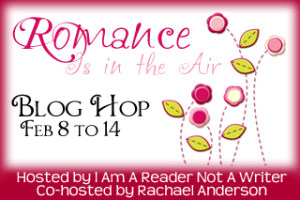
Welcome to the Romance is in the Air Giveaway. Thanks to I Am a Reader, Not a Writer and Rachael Anderson for hosting. This hop runs from February 8 through February 14, 2014.
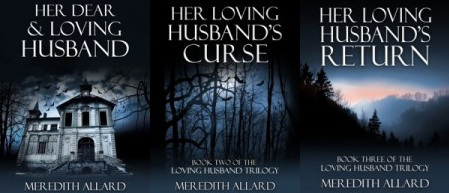
I’ll be giving away two e-book sets of the complete Loving Husband Trilogy as well as two audiobooks (your choice of either Her Dear & Loving Husband or Her Loving Husband’s Curse). I also have three paperback copies available (your choice of either Her Dear & Loving Husband, Her Loving Husband’s Curse, or Her Loving Husband’s Return). The grand prize is a $20 gift certificate to either Amazon.com or BN.com (your choice) for one lucky winner.
You must be a follower of this blog to enter. You can gain extra entries with the following:
Following this blog +1
Follow me on Twitter +1
Like my Author Page on Facebook +1
Like The Copperfield Review on Facebook +1
Friend me on Goodreads +1
The extra entry options are available on the right sidebar of this page. Then fill out the form below and you’re entered.
[contact-form]
There are over 150 blogs participating in this giveaway. Check here to visit the other sites and see what other great prizes you can win.
Filed under: Giveaways, Her Dear & Loving Husband, Her Loving Husband's Curse, Her Loving Husband's Return Tagged: Giveaways, I am a Reader Not a Writer, Loving Husband Trilogy, Romance is in the Air Blog Hop

February 3, 2014
Guest Post–Seven Tips to Create Memorable Historical Fiction Characters
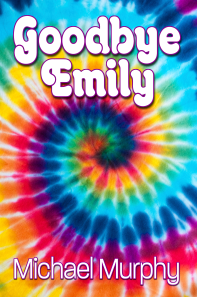 Here’s a great guest post from Michael Murphy with tips for creating memorable characters in historical fiction. Michael is the author of the novel Goodbye Emily. His piece also appears in the Winter 2014 edition of The Copperfield Review.
Here’s a great guest post from Michael Murphy with tips for creating memorable characters in historical fiction. Michael is the author of the novel Goodbye Emily. His piece also appears in the Winter 2014 edition of The Copperfield Review.
* * * * *
In historical fiction, creating realistic and memorable characters can present challenges not faced in other genres. Characters, like real people, are shaped by many factors, culture, heritage, religion, physical characteristics, birth order and life events. Memorable characters rebel at some of these influences. A classic example is Scarlett O’Hara in Gone with the Wind. Her rebellion from southern culture, Irish heritage and what is expected from a proper southern belle makes her one of the most memorable historical fiction characters ever.
I often turn to other writers for help and guidance. Therefore, with two historical mysteries that will be released by Random House Alibi later this year, I’ve come up with seven tips to create realistic and memorable characters.
Character study. Get to know your characters before you begin your manuscript. Drafting a detailed character study is a valuable tool in any genre. Write one for each primary and key secondary character, addressing the character’s culture, family, physical characteristics and what has led to that character rebelling against them. Another important area to address is the change your character will go through during the story.
Conflict. Enhance your character through physical, personal and professional obstacles to overcome. Let the era you’re writing about provide the conflict.
Nobody’s perfect. Authors often hesitate to give their favorite characters flaws, or despicable characters redeeming traits. No one is one hundred percent good or bad. If your protagonist is ninety percent heroic, it’s the ten percent that will give him or her depth and leave lasting impressions with your readers.
Historical figures. Historical fiction provides opportunities lacking in other genres. Consider ways for your characters to interact with readily identifiable historical figures. Their interaction with those larger than life characters will enhance your story and their characterization. In my historical mystery set in 1933 New York, my characters encounter Dashiell Hammett, Lillian Hellman, Cole Porter, Babe Ruth, Joseph Kennedy and more.
Attention to detail. Historical fiction writers are excellent at creating vivid settings with attention to detail. Make sure your characters benefit from the same detailed research that make your scenes so clear to the reader. And avoid clichés. How do your characters feel and react to the choking smoke of a locomotive, or the salty spray of an ocean voyage? What do your characters wear and more importantly, why do they wear them?
Behavioral traits. As you would in writing any genre, give your characters memorable, if not quirky behavior and traits. Show them displaying mannerisms that make them unique. One might chew tobacco, or comb their hair at inopportune times. Give your characters identifiable quirks and mannerisms, just like real people.
Humor. Historical fiction devoid of humor can result in a novel appearing dull and listless. Life is full of humor, embrace it and utilize your sense of humor in your characters. If you’re not experienced at writing humor remember, like drama, humor is driven by conflict. Drama or humor often comes from a character’s reaction to a scene’s conflict. A suspected haunted house, for example can be chilling or hysterical depending on your character’s reaction.
We write and read historical fiction for the opportunity to join vivid characters in past cultures and historical events. I hope these seven tips help make your journey easier and your characters more memorable.
________________________________________________________________
 Michael Murphy is a full time writer in Arizona. He’s been writing novels for the past fifteen years. His most recent novel, Goodbye Emily, journeyed back to Woodstock. In August, Random House Alibi will release the historical mystery, The Yankee Club, Murphy’s ninth published novel. Coming next January is the second in the series, All That Glitters.
Michael Murphy is a full time writer in Arizona. He’s been writing novels for the past fifteen years. His most recent novel, Goodbye Emily, journeyed back to Woodstock. In August, Random House Alibi will release the historical mystery, The Yankee Club, Murphy’s ninth published novel. Coming next January is the second in the series, All That Glitters.
Murphy’s website www.mjmurphy.com
Goodbye Emily www.goodbyeemily.com
Murphy’s Mystery and History blog: http://blog.mjmurphy.com
Twitter: https://twitter.com/mmurfy68
Facebook: https://www.facebook.com/mmurfy86
Filed under: Guest Authors, Historical Fiction Tagged: guest authors, Michael Murphy, Tips to Create Memorable Historical Fiction Characters, writing historical fiction

January 30, 2014
That You Are Here is Now Available
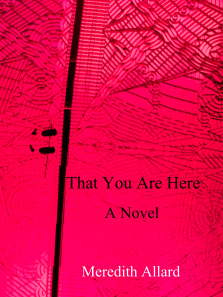 Okay, so here’s the thing…
Okay, so here’s the thing…
I had originally set the publication date for my newest novel, That You Are Here, for Valentine’s Day. Then last Saturday I realized it was finished, or I was finished, or something was finished; anyway, the book was ready to go. I uploaded it to Amazon figuring I would ask some of my friendly neighborhood readers if they’d be interested in reviewing the book before anyone knew it was there, hoping there would be a review or two when I was ready to announce the book. Today, I stopped by the book’s Amazon page to see if the paperback was available, and I discovered that a number of copies have already sold. There was even a 5 star review. A. A. Katz, I don’t know who or where you are, but blessings. Truly. You made my day.
An FYI: if you agree with anything anyone on Duck Dynasty has ever said, you will not like That You Are Here. If, however, you believe that all human beings are in fact human beings, and that all human beings fall in love, then That You Are Here might be right up your alley.
It’s no surprise that That You Are Here is a love story. All of my novels are love stories in one way or another. The surprise might be that That You Are Here is a completely present-day story set in one of my favorite places, Portland, Oregon. That’s why I added (Usually) to my tag line, so now it reads (Usually) Writing Historical Fiction With a Twist. Or, the surprise might be that the romantic leads are both men. Andrew Whittaker and Mark Bryce have quite a journey to travel together, and I hope they are a couple readers cheer for.
That You Are Here is my way of adding my voice alongside others who think that people who are in love should be able to get married. I’ve seen documentaries about the Freedom Riders, the brave men and women who fought for equal rights during the Civil Rights Movement in the 1960s, and I’m always amazed at the extraordinary lengths they went to—physically and emotionally—to help their cause. I often wonder if I would have that kind of physical courage to help support a cause I believe in. Let me rephrase that. I know for a fact I don’t have that kind of physical courage. What I can do to support a cause I believe in is share my words. I happened to gather those words into a 62,359-word novel entitled That You Are Here.
For readers of my Loving Husband Trilogy, That You Are Here might seem like a huge leap in a different narrative direction, but it isn’t really. True, it’s a present-day story when I’m most known for historical fiction. But everything I write is about people who are outsiders or different from the general society. James Wentworth in the Loving Husband Trilogy struggles as a supernatural being (a vampire) in a human world. In Victory Garden, Rose Scofield struggles as a woman who wants to live on her own terms during a time (1917-1922) when women were fighting for their rights. The Woman in Woman of Stones has a similar struggle since in the Biblical era she is little more than chattel. In That You Are Here, Andrew Whittaker and Mark Bryce must make sense of what it means to be a gay man in the 21st century. Great progress has been made, certainly, but there is still prejudice to overcome. For readers who see That You Are Here as a love story between two human beings (which it is), I think you’ll find it right on target with issues I’ve dealt with in previous books.
I’m not trying to convince anyone of anything. I’m not naive enough to think that someone who disagrees with same-sex marriage will read my book or one like it and change their minds. This is the story that was in my heart to write, so this is the story I wrote. I hope the novel finds readers with an open mind, and an open heart, who can understand the story for what it is–a love story.
My offer for review copies stands, by the way. If you’re one of those readers with one of those open minds, and even one of those open hearts, contact me. I’d love to know what you think.
Addendum: Here in Vegas, and probably across the U.S., we’ve been seeing a new television commercial for iPad Air that features lines from Walt Whitman’s “Ode 166″ from Leaves of Grass. The ad features happy people doing happy things as the poetic-sounding voiceover actor recites the following lines:
The question, O me! so sad, recurring—What good amid these, O me, O life?
Answer.
That you are here—that life exists, and identity;
That the powerful play goes on, and you will contribute a verse.
First, yes, this is where I found the title for the novel–That You Are Here–and the quote appears at the beginning of the book. Now, in my defense, I feel I should point out that I have had this title floating around since last summer and I saw the iPad commercial for the first time a week ago. What can I say? Great minds think alike.
Filed under: That You Are Here Tagged: Amazon, MM Romance, That You Are Here

January 20, 2014
Feeling the Pain of First Drafts
While I’m busy getting That You Are Here ready for public consumption, I thought I’d repost some previous favorites. Here is the beginning of the series about writing first drafts, my least favorite part of the writing process. I wrote this while I was working on Her Loving Husband’s Curse, Book Two of the Loving Husband Trilogy. Enjoy!
* * * * *
I am languishing in first draft hell. You would think that because I’m working on the second book in a series that the first draft would be easier this time, but it isn’t. Not even close. I spent about a year daydreaming through this second book while I was writing the first novel, but it’s still a chore, putting one word next to the other until I have a complete draft, something to work with, anything to work with, a self-created slab of clay I can mold into the story I see so clearly in my mind.
The truth is, I hate writing first drafts of anything—essays, short stories, novels, e-mails. This post. I have, I’m not embarrassed to admit, rewritten grocery lists because I didn’t like the way I organized them. When I’m teaching a writing class I always know what to say to my students to help them deal with first draft phobias or writer’s block, but do I listen to my own advice? Rarely. At least not until I’m so annoyed I have to remind myself what I already know about writing. Doctor, heal thyself.
As much as I love writing Her Loving Husband’s Curse, I’m still falling victim to old writers’ stand-bys, otherwise known as Excuses. Trust me, it’s not hard to find plenty of Excuses to keep from working. These are the days when I dust and vacuum instead of writing, you know, not just regular maintenance house cleaning but the vacuuming-behind-the-sofa-where-people-will-never-see kind of cleaning. The days when I brush my cats instead of writing that first draft, or worse, talk to my cats instead of writing that first draft. There are grocery stores to shop in, movies to see, lunches to do, friends to visit, books to read, classes to teach. I’m even going to the gym instead of writing, and I hate going to the gym. At this precise moment, I’m writing this post instead of working on that first draft. The list of Excuses can be endless.
In an attempt to remind myself what I already know about first drafts, I decided to write a few posts about advice I’ve given my students to help them over such obstacles. The advice has been helpful for my students, so hopefully it will help others. And, quite frankly, I need the reminding.
Filed under: Writing Tagged: writing, writing first drafts




